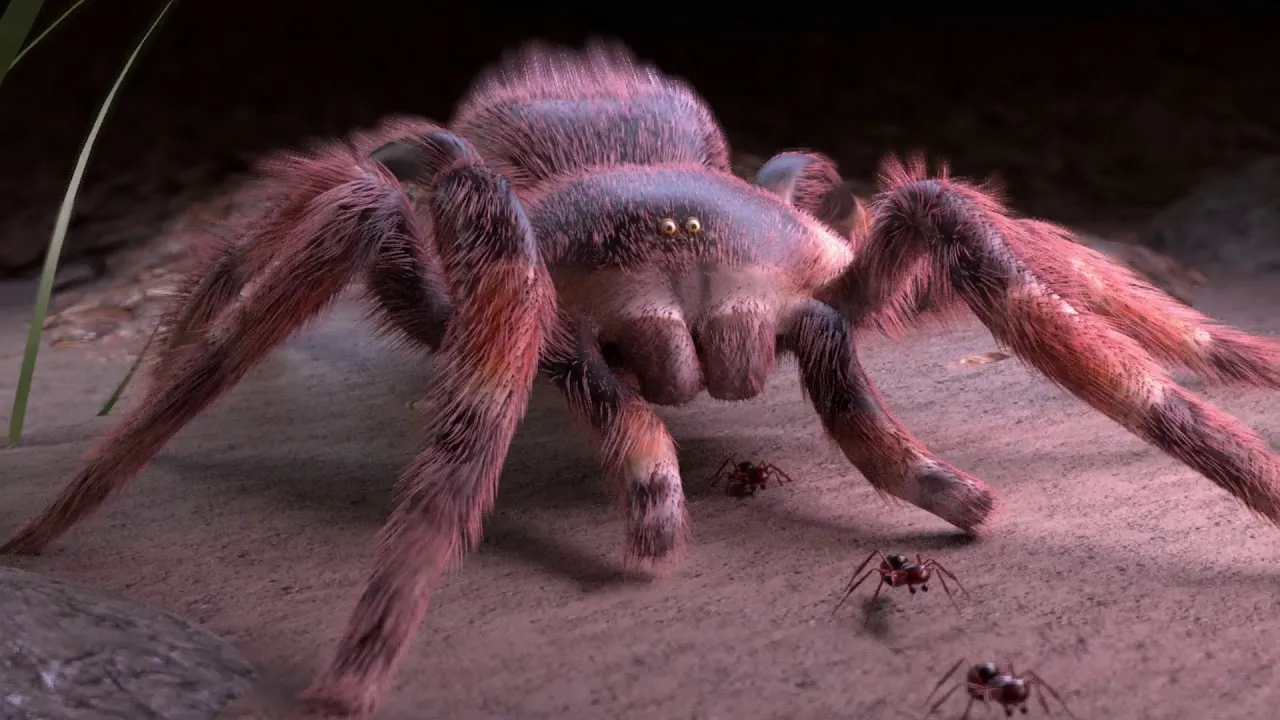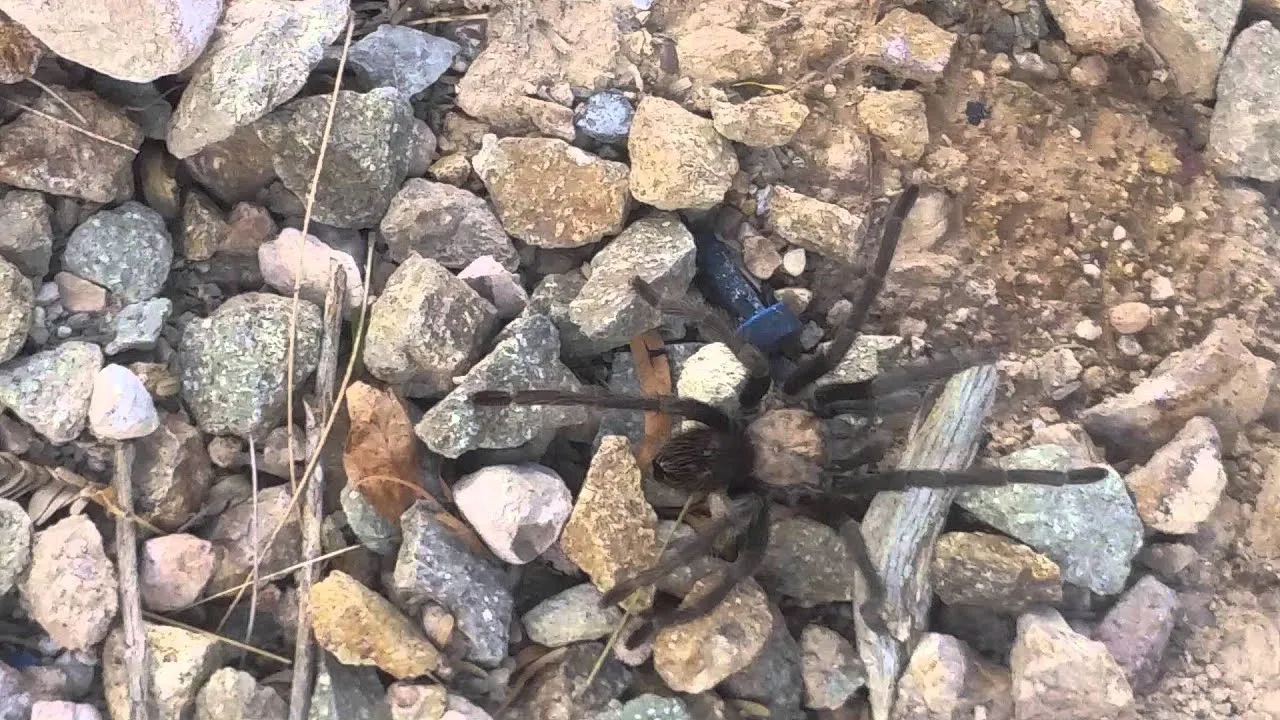Blue tarantulas, with their striking cobalt hues, have captured the attention of arachnid enthusiasts and casual observers alike. Their vibrant coloration and captivating behavior make them a popular subject for videos, offering a window into the fascinating world of these eight-legged creatures. This article dives into the top 5 amazing facts about blue tarantulas, alongside providing essential information on their care and characteristics. Whether you’re a seasoned tarantula keeper or simply curious about these magnificent spiders, prepare to be amazed by what you discover about the incredible blue tarantula.
What is a Blue Tarantula
The term “blue tarantula” generally refers to a group of tarantula species characterized by a prominent blue coloration, most notably the Cobalt Blue Tarantula (Cyriopagopus lividus). These spiders are native to the tropical regions of Southeast Asia, specifically found in countries like Myanmar and Thailand. Their striking appearance has made them highly sought after in the exotic pet trade. These spiders are not only visually appealing but also possess unique behaviors and characteristics that set them apart from other tarantula species, making them a fascinating subject of study and observation.
Origin and Habitat of Blue Tarantulas
Blue tarantulas, in particular the Cobalt Blue Tarantula, originate from the tropical rainforests of Southeast Asia. Their natural habitat typically includes burrows in the ground, often near trees or under rocks, where they can find shelter from the elements and ambush their prey. These environments provide the humidity and temperature range that these tarantulas require to thrive. The specific microclimates within these habitats are crucial for their survival, influencing their molting cycles, feeding behaviors, and overall health. Understanding their natural habitat is essential for providing proper care in a captive setting.
The Cobalt Blue Tarantula

The Cobalt Blue Tarantula (Cyriopagopus lividus) is perhaps the most well-known of the blue tarantula species. Their metallic blue coloration, particularly vivid in adult females, is a key feature that draws so many enthusiasts. They are medium to large in size, with females often reaching a leg span of up to 6 inches. In addition to their remarkable color, Cobalt Blues are known for their relatively fast growth rate compared to other tarantula species. This combination of stunning appearance and manageable care has made them a favorite in the pet trade, though potential owners should still be prepared for their specific needs.
Appearance and Characteristics
Stunning Blue Coloration
The most striking characteristic of blue tarantulas is, without a doubt, their vibrant blue coloration. This coloration is not a pigment but rather a structural color, meaning it is produced by the way light reflects off microscopic structures on the tarantula’s exoskeleton. The intensity of the blue can vary depending on factors such as the tarantula’s age, sex, and the angle of light. Typically, the legs and carapace display the most prominent blue hues, while the abdomen may have a slightly different color. This striking color serves multiple purposes, including camouflage and display, making these spiders visually stunning and unique in the arachnid world.
Size and Physical Features

Blue tarantulas, while not the largest tarantula species, still possess a considerable size. The Cobalt Blue Tarantula, for instance, can have a leg span that reaches up to 6 inches in females, while males are typically smaller. Their bodies are robust, with a well-defined cephalothorax (the fused head and chest) and abdomen. Like all tarantulas, they have eight legs, two pedipalps (used for sensing and manipulating food), and chelicerae (fangs). These physical features are essential for their survival, enabling them to move, hunt, and defend themselves effectively. Understanding their size and physical characteristics is critical for providing appropriate enclosures and care.
Behavior and Temperament
General Behavior
Blue tarantulas are known for their relatively fast movement and skittish behavior. They are primarily nocturnal, meaning they are most active during the night. In their natural habitat, they spend much of their time in burrows or hiding places. In captivity, they may exhibit similar behaviors, seeking shelter and avoiding direct contact. Their speed can make them challenging to handle, and caution is always advised. Despite their skittishness, they can be fascinating to observe, offering insights into their hunting strategies and defensive mechanisms. Their behavior is a mix of stealth, agility, and a touch of unpredictability.
Defensive Mechanisms

Like all tarantulas, blue tarantulas possess defensive mechanisms to protect themselves from predators. Their primary defense is their venom, delivered through their fangs. While not usually lethal to humans, a bite can be painful and cause localized symptoms. In addition to their venom, blue tarantulas may also exhibit threat postures, such as rearing up and displaying their fangs. They may also flick urticating hairs from their abdomen if they feel threatened, which can cause irritation. Handling them requires care and a good understanding of their behavior to avoid provoking a defensive response.
Diet and Feeding Habits
What Blue Tarantulas Eat
Blue tarantulas are carnivores, primarily feeding on insects in the wild. Their diet typically consists of crickets, roaches, and other invertebrates that they can capture. In captivity, they are commonly fed a diet of commercially available insects, such as crickets and mealworms. The size of the prey should be appropriate for the size of the tarantula, ensuring that they can easily catch and consume it. It’s essential to provide a varied diet to ensure they receive all the necessary nutrients for healthy growth and development.
Feeding Frequency

The feeding frequency for blue tarantulas depends on their age and size. Young tarantulas, which are still growing, typically need to be fed more frequently, perhaps every other day or every few days. Adult tarantulas can be fed less often, maybe once or twice a week. Overfeeding can lead to health problems, so it is essential to monitor their abdomen size. If the abdomen appears overly plump, reduce the feeding frequency. Always remove any uneaten food within 24 hours to prevent the build-up of mold or mites in the enclosure. Water should always be available.
Captive Care and Handling
Enclosure Requirements
Providing the correct enclosure is crucial for the well-being of blue tarantulas. A suitable enclosure should be escape-proof, with enough space for the tarantula to move around and establish a burrow. The size of the enclosure should be proportional to the size of the tarantula. Substrate, such as coconut fiber or peat moss, should be provided to allow the tarantula to burrow and maintain humidity. The enclosure also needs a water dish for hydration and a hide, such as a piece of cork bark, to provide a safe place to retreat. Ventilation is also important to prevent mold and maintain air quality.
Handling Safety

Handling blue tarantulas should be done with caution, as they are prone to skittish behavior and can bite if they feel threatened. It’s best to avoid handling them unless it’s absolutely necessary, such as for enclosure maintenance or health checks. If handling is required, do so over a soft surface to prevent injury in case of a fall. Gentle and deliberate movements are crucial to avoid startling the tarantula. Always wash your hands thoroughly before and after handling. Understanding their behavior and respecting their space are key to ensuring a safe and positive experience for both the tarantula and the handler.
5 Amazing Facts about Blue Tarantulas
Fact 1 Their Venom
While blue tarantula venom is not generally considered life-threatening to humans, it can still cause some unpleasant symptoms. A bite from a blue tarantula can cause localized pain, swelling, and redness at the bite site. Some individuals may experience more severe reactions, such as muscle cramps or nausea. However, the venom is not potent enough to cause systemic effects in most cases. The severity of a bite can also depend on the individual’s sensitivity and the amount of venom injected. Medical attention is typically not required, but it’s always wise to monitor the bite site and seek medical advice if symptoms worsen.
Fact 2 Lifespan

Blue tarantulas, particularly females, have a relatively long lifespan compared to many other spider species. Females can live for 10-15 years, while males typically have a shorter lifespan, often only 2-4 years. This difference in lifespan is attributed to the stress of mating and the overall metabolic rate of each sex. Their longevity is a factor that potential owners need to consider, as owning a blue tarantula is a long-term commitment. Providing proper care and a stress-free environment can also contribute to their lifespan.
Fact 3 Molting Process
Like all tarantulas, blue tarantulas molt as they grow. Molting is the process of shedding their exoskeleton to allow for growth. During this process, the tarantula will lie on its back and shed its old skin, revealing a new, larger exoskeleton underneath. Molting is a vulnerable time for tarantulas, as their new exoskeleton is soft. The frequency of molting decreases as they age. The entire process can take several hours or even a day, and it’s crucial to avoid disturbing the tarantula during this time. After molting, the tarantula’s colors can appear even more vibrant.
Fact 4 Color Variation
While the cobalt blue is the most well-known, the blue coloration can vary among different blue tarantula species. Some may exhibit a lighter shade of blue, while others have a deeper, more intense hue. This variation can be influenced by factors such as genetics, diet, and even environmental conditions. The degree of blue in an individual tarantula can also change over time, especially after molting. Therefore, each blue tarantula can be unique in its appearance. This color variation adds another layer of fascination to these already captivating creatures.
Fact 5 Popularity

Blue tarantulas are highly sought after in the exotic pet trade, largely due to their stunning appearance and intriguing behavior. Their popularity has led to a growing number of videos on YouTube and other platforms, showcasing their beauty and providing insights into their care. Their relatively manageable care requirements also contribute to their appeal. They are a rewarding pet for those willing to learn about their needs. The availability of information and resources has made it easier for enthusiasts to care for these spiders, contributing to their continued popularity among pet owners worldwide.
Conclusion
Blue tarantulas, with their striking appearance and fascinating behaviors, are captivating creatures that continue to intrigue both experts and newcomers to the world of arachnids. From their vibrant blue coloration to their unique defensive mechanisms and captive care requirements, there is always more to discover about these amazing spiders. By understanding their natural habitat, behavior, and specific needs, enthusiasts can provide the proper environment for these beautiful creatures. The growing popularity of blue tarantulas and the abundance of online resources ensure that the fascination with these spiders will continue for years to come. Remember always to prioritize their safety and well-being.
